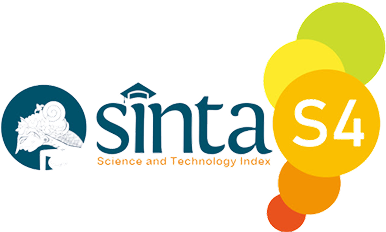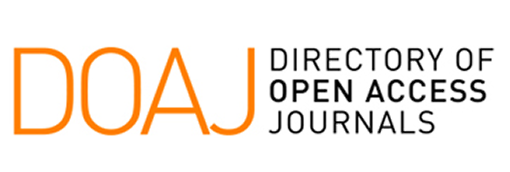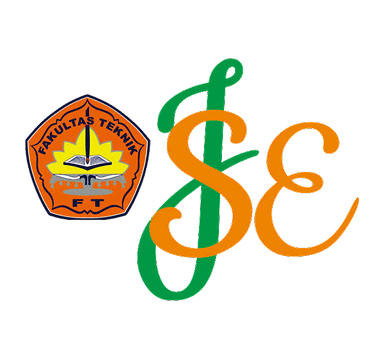Indeks Sanitasi dan Faktor-Faktor Penentunya Pada Area Urban Poverty Kota Bandung(Studi Kasus: Kecamatan Bandung Wetan, Kota Bandung)
Keywords:
analisis faktor, indeks sanitasi, STBM, urban poverty, WASHAbstract
Universal access to water, sanitation and hygiene (WASH) is a basic human right that reflects well-being. However, disparities in access to WASH persist in Indonesia, influenced by economic factors, education and sanitation behaviours. In urban areas, urban poverty exacerbates the gap in access to WASH, with the urban poor vulnerable to inadequate sanitation due to economic and knowledge constraints. In Kecamatan Bandung Wetan, which is located in the middle of Bandung city, this condition is still found, where low-income groups are vulnerable to the fulfilment of proper sanitation. The sanitation index is a tool to evaluate the sanitation system in a community. The sanitation index was analysed using exploratory factor analysis. The variables that make up the index are based on the 5 pillars of Community-Led Total Sanitation (CLTS). The results of the analysis show that the sanitation index in Kecamatan Bandung Wetan is built by the factors of clean water use, household welfare, low prevalence of environmental diseases, faecal user interface, and final disposal of household waste, with the highest sanitation index value found in Kelurahan Citarum.
References
[1] S. Irianti and P. Prasetyoputra, “Rural–Urban Disparities in Access to Improved Sanitation in Indonesia: A Decomposition Approach,” Sage Open, vol. 11, no. 3, 2021, doi: 10.1177/21582440211029920.
[2] T. Akter and A. M. Ali, “Factors influencing knowledge and practice of hygiene in Water, Sanitation and Hygiene (WASH) programme areas of Bangladesh Rural Advancement Committee,” 2014.
[3] N. Bhatt et al., “What motivates open defecation? A qualitative study from a rural setting in Nepal,” PLoS One, vol. 14, no. 7, Jul. 2019, doi: 10.1371/journal.pone.0219246.
[4] Asian Development Bank, Urban Poverty in Asia. Manila: Asian Development Bank, 2014.
[5] I. Hussain, N. Regassa, and N. Wijerathna, “Water, Health and Poverty Linkages: Conceptual Framework and Empirical Evidence,” in National Workshop on Water, Health and Poverty Linkages in Sri Lanka, Colombo, 2003.
[6] Portal Data Kota Bandung, “Data Sebaran Kemiskinan di Kota Bandung Tahun 2022,” Bandung, 2023.
[7] Badan Pusat Statistik Kota Bandung, “Kecamatan Bandung Wetan Dalam Angka 2023,” Bandung, 2023.
[8] Kementerian PPN/Bappenas, “Pedoman Pengukuran Capaian Pembangunan Perumahan dan Permukiman Berbasis Hasil (Outcome),” Jakarta, 2020.
[9] Dinas Kesehatan Kota Bandung, “Profil Kesehatan Kota Bandung Tahun 2022,” Bandung, 2023.
[10] A. N. Nirazawa and S. V. W. B. de Oliveira, “Sanitation indicators: Analysis of variables to construct municipality indicators,” Revista de Administracao Publica, vol. 52, no. 4, pp. 753–763, Jul. 2018, doi: 10.1590/0034-7612168118.
[11] Badan Informasi Geospasial, “Geodatabase Data Batas Wilayah Administrasi Desa/Kelurahan Edisi September 2023,” 2023. Accessed: Jul. 04, 2024. [Online]. Available: https://geoservices.big.go.id/rbi/rest/services/BATASWILAYAH/Administrasi_AR_KelDesa_10K/MapServer
[12] G. D. Israel, “Determining Sample Size 1 The Level of Precision,” 1992. [Online]. Available: http://edis.ifas.ufl.edu.
[13] M. A. Bujang, “A step-by-step process on sample size determination for medical research,” 2021, Penerbit Universiti Sains Malaysia. doi: 10.21315/mjms2021.28.2.2.
[14] A. Hoffmann and E. Giovannini, “Handbook on Constructing Composite Indicators,” Paris, 2008. [Online]. Available: www.oecd.org/publishing/corrigenda.
[15] S. Pangestu and J. R. H. Sitorus, “Penyusunan Indeks Sanitasi Provinsi-Provinsi di Indonesia: Analisis Data Susenas MKP 2019,” Seminar Nasional Official Statistics, pp. 363–372, 2021.
[16] J. F. Hair, W. C. Black, B. J. Babin, and R. E. Anderson, Multivariate Data Analysis, Eighth Edition. Andover, Hampshire: Cengage Learning EMEA, 2019. [Online]. Available: www.cengage.com/highered
[17] P. Schober, C. Boer, and L. A. Schwarte, “Correlation coefficients: Appropriate use and interpretation,” Anesth Analg, vol. 126, no. 5, pp. 1763–1768, May 2018, doi: 10.1213/ANE.0000000000002864.
[18] L. Salvati and M. Carlucci, “A composite index of sustainable development at the local scale: Italy as a case study,” Ecol Indic, vol. 43, pp. 162–171, 2014, doi: 10.1016/j.ecolind.2014.02.021.
[19] United Nations Development Programme, The 2021/2022 Human Development Report. New York: United Nations Development Programme, 2022.
[20] E. Naria, H. Santoso, K. Rochadi, and N. Nurmaini, “Exploring the potentiality of family resources on basic household sanitation management in dense settlements of binjai in north Sumatera province of Indonesia,” Open Access Maced J Med Sci, vol. 9, pp. 547–551, Jan. 2021, doi: 10.3889/oamjms.2021.5720.
[21] D. O. Donacho, G. T. Tucho, and A. B. Hailu, “Households’ access to safely managed sanitation facility and its determinant factors in Jimma town, Ethiopia,” Journal of Water Sanitation and Hygiene for Development, vol. 12, no. 2, pp. 217–226, Feb. 2022, doi: 10.2166/washdev.2022.003.
[22] P. Singh et al., “An Assessment of Personal Hygiene Practices Among Young Adults: A Cross-Sectional, Descriptive Study,” Cureus, vol. 15, no. 8, Aug. 2023, doi: 10.7759/cureus.44308.
[23] D. Meili et al., “Indicators for Sanitation Quality in Low-Income Urban Settlements: Evidence from Kenya, Ghana, and Bangladesh,” Soc Indic Res, vol. 162, no. 2, pp. 683–720, Jul. 2022, doi: 10.1007/s11205-021-02855-9.
Downloads
Published
Issue
Section
License
Copyright (c) 2024 Jasmine Raissa Rachmadina, Mindriany Syafila, Dyah Wulandari Putri (Author)

This work is licensed under a Creative Commons Attribution 4.0 International License.












